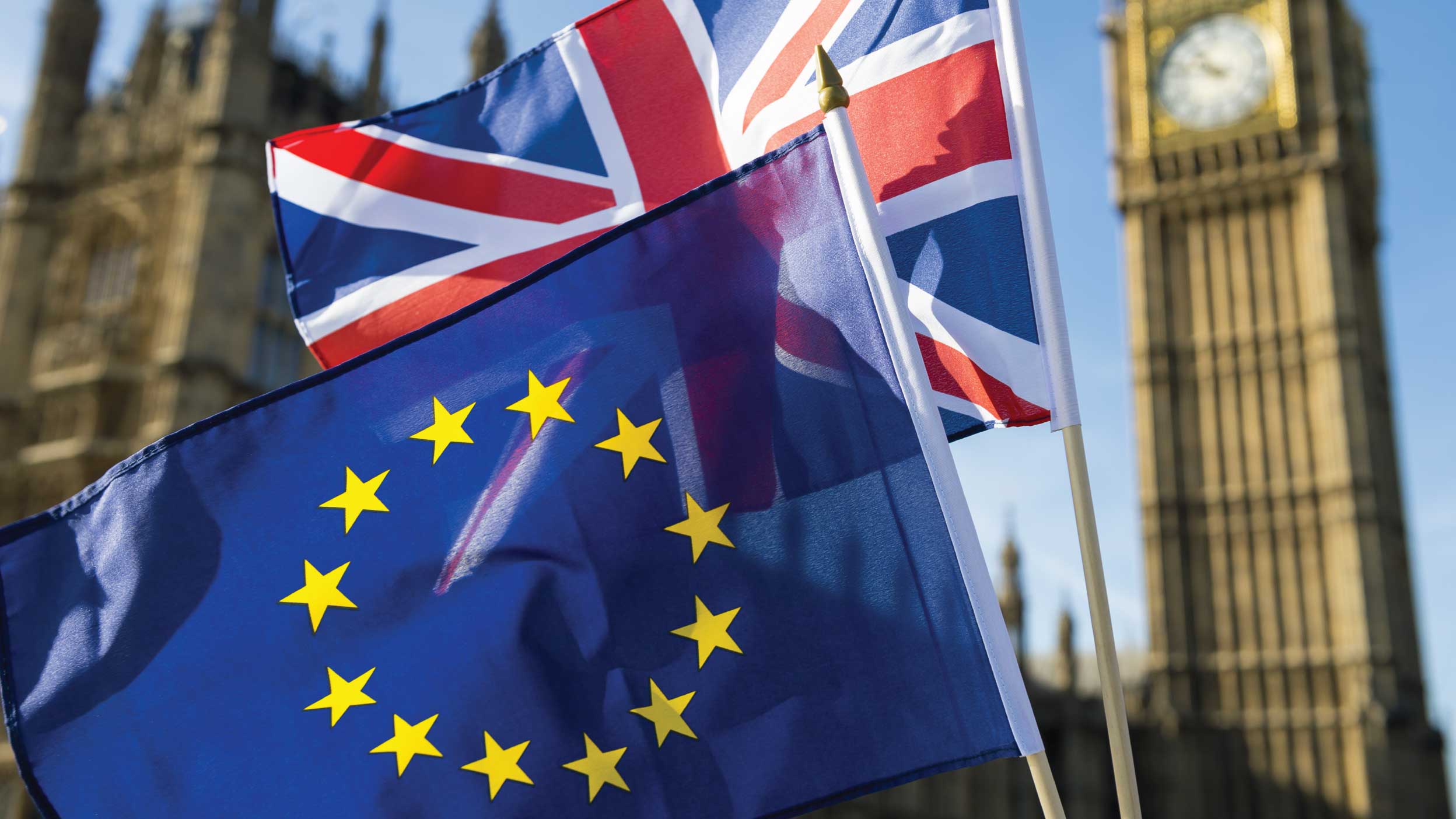EU approach: seek to negotiate while developing potential countermeasures
The EU is developing a four-pronged approach in response to the US challenge. First, give negotiations a chance, taking advantage of the 90-day suspension of reciprocal tariffs to try and reach a deal while avoiding an unnecessary tit-for-tat. The visit of EU trade chief, Maros Sefcovic, to Washington in mid-April demonstrated the EU’s willingness to engage.
Second, the Commission is developing a range of potential countermeasures should talks with the US fail. The day after President Trump paused reciprocal tariffs, the EU announced it would pause its initial retaliatory measures – targeting US agricultural and industrial goods exports worth up to €26 bn – for a corresponding period of 90 days. However, the Commission is also working on additional goods countermeasures as well as signalling that it could escalate retaliation to encompass US services companies in the future.4
Third, EU leaders are seeking to strengthen trading relations with other countries around the world, with the Commission recently relaunching talks with Malaysia in January, seeking to accelerate existing negotiations with India, Indonesia and Thailand, and launching new FTA talks with the United Arab Emirates.
And fourth, the EU is seeking to protect the single market from dumping of cheap goods as a result of trade diversion, for example recently strengthening the steel safeguard measure to cut tariff-free imports.5
Talks remain in early stages
The EU has signalled for some time its willingness to negotiate both on tariffs and non-tariff barriers. However, the two parties are still in the early stages of scoping a potential agreement. The US has set a high bar on concessions it aims to obtain from the EU, which go far beyond tariff reductions (for example on VAT, Digital Services, and relaxation of regulations). Recent discussions in Washington focused on the EU offer of tariff elimination for industrial goods (‘zero-for-zero tariffs’), collaboration on addressing global overcapacity in the steel and aluminium sectors and collaboration on key supply chains such as pharmaceuticals and semiconductors (both sectors on which the US could still apply tariffs).
Talks partially covered non-tariff barriers but some of the US requests face strong opposition from the EU – in particular loosening standards on food health and safety and relaxing EU tech regulation. The EU is also ready to offer an increase in LNG purchases from the US through a system of demand aggregation.
At this stage, the Commission’s current working assumption is that it may not be able to negotiate away the 10% baseline tariff but may be able to make progress on reducing the ‘reciprocal’ tariff and eliminating some or all the sectoral tariffs. The next step is for the Commission, working closely with Member States, to draw up more formal proposals to put to the US side.
EU challenges: access to the White House and a united EU response
One of the key challenges the Commission faces is the lack of a direct channel of communication to the White House. Trade is exclusively the competence of the EU Commission, but the White House regards European institutions with suspicion, preferring instead to deal with individual member states. As such, the Commission is dealing with US Commerce Secretary Howard Lutnick and Trade Representative Jamieson Greer rather than Peter Navarro, Trump’s trade adviser.
A second key challenge is delivering unity in the EU’s response. Given the different levels of exposure to US goods tariffs experienced by individual member states, different attitudes to potential concessions are evident. This is also the case in discussions regarding broader retaliatory measures, in which Germany, Italy and Ireland – as the member states potentially most exposed – have expressed reservations about targeting US services. Therefore, the key task for the Commission in the next few weeks is coordinating the EU’s own negotiation mandate ahead of further talks with the US counterparts.
Conclusion
Recent comments by President Trump on negotiations with the EU – “there’ll be a trade deal, 100 per cent"6– have raised hopes that a deal could soon be concluded. However, EU policymakers are more cautious. A key milestone in the coming weeks will be the result of the investigations launched by President Trump on pharmaceuticals and semiconductors imports, which could lead to further tariffs and complicate the negotiations with the EU (in 2024, pharmaceuticals were the top US import from the EU). Meanwhile, engagement at a technical level between the two delegations is ongoing. While EU leaders remain confident of an eventual deal, the substance and timing remain uncertain at this stage.





